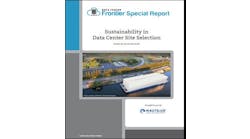A new special report series, sponsored by Panduit, explores hybrid IT and the colo industry. This entry in the series provides a clear step-by-step approach to a hybrid IT approach “done right”.
Get the full report.
Read Part One of our series: Hybrid Computing is Helping Redefine Modern IT Models. (Photo: Rich Miller)
Read Part Two of our series: Making the Cloud and Data Center Work Together Effectively (Photo: Rich Miller)
Hybrid IT doesn’t have to be complicated unless you somehow design it that way.
Finally, you’ll need to put this all together. There is no single blueprint for becoming a Hybrid IT environment. However, there are good approaches and best practices. One crucial factor to consider is that Hybrid IT acts as a bridge into the future. However, you never really want to stop on the bridge and admire the view. It’ll get old pretty quickly. The goal of Hybrid IT is to help you create that bridge into cloud and modernization and also to help you cross it.
Hybrid IT doesn’t have to be complicated unless you somehow design it that way. But, to make sure you get it right, working with a good partner that is experienced in Hybrid IT strategies that encompass edge, cloud, colocation, and on-premises solutions can go a long way. It’s these types of partners that help facilitate your journey into the cloud, while still providing underlying systems capable of handling a wide variety of Hybrid IT requirements.
Catch up on the first entry and second entry in the special report series. We will also be exploring the following topics:
- What’s New? How Data Centers are Leveraging Hybrid IT
- Hybrid IT Partners Aim to Improve Cloud, Edge, Data Center Deployments
Download the full report, Hybrid IT – Supporting Critical Initiatives During a Journey to Digital Modernization,“ to explore further how hybrid computing is fueling the data center industry.






